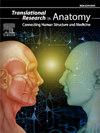男性和女性不孕症动物模型的外科植入物:一种翻译方法
Q3 Medicine
引用次数: 0
摘要
不孕不育仍然是生殖医学的一个重大挑战,影响着男性和女性。基于动物模拟植入手术的最新进展为开发创新生殖疗法提供了翻译平台。目的综述基于动物的外科植入模型在促进配子发生、激素产生和生殖器官完整性方面的作用和进展,并探讨其在治疗男性和女性不育症方面的应用潜力。方法通过模拟生殖器官植入手术的动物模型研究,评价其治疗不孕症的潜力。调查包括对显微外科技术、生物植入物和机器人辅助手术的进展进行全面回顾,这些技术提高了植入物放置的精度和有效性。还考虑了临床前开发的伦理准则,以确保这些方法对未来人类应用的适用性和安全性。此外,组织病理学和遗传学评估作为优化种植体设计和功能的关键工具进行了检查。结果从自体睾丸和卵巢组织移植物到人工生殖组织支架,移植物的应用范围广泛。在男性不育症中,设计用于输精管切除术逆转的睾丸植入物和假体已证明在恢复精子产生和解决无精子症方面有效。对于女性不孕症,卵巢植入物已被证明可以支持卵泡生长,而输卵管和子宫假体则有助于胚胎移植和着床。包括显微外科手术和机器人辅助在内的技术进步大大提高了这些干预措施的准确性和成功率。临床前研究强调严格遵守伦理标准,并利用组织病理学和遗传学分析来指导这些植入物的改进和优化,以供临床使用。结论外科植入与辅助生殖技术相结合,为恢复生育能力提供了良好的途径。然而,临床翻译面临着与生物相容性和长期功能相关的挑战。未来的研究将集中在整合干细胞和智能生物材料的生物工程结构上,以进一步提高治疗效果。本文章由计算机程序翻译,如有差异,请以英文原文为准。
Surgical implants in animal models for male and female infertility: A translational approach
Background
Infertility remains a significant challenge in reproductive medicine, affecting both men and women. Recent advances in animal-based simulations of implant surgery have provided translational platforms for developing innovative reproductive therapies.
Objectives
To review the role and progress of animal-based surgical implant models in enhancing gametogenesis, hormone production, and reproductive organ integrity, and to discuss their translational potential for treating infertility in men and women.
Methods
In this review, animal model studies simulating implant surgeries for reproductive organs were analyzed to assess their potential in treating infertility. The investigation included a comprehensive review of advancements in microsurgical techniques, biological implants, and robotic-assisted procedures that enhance the precision and effectiveness of implant placement. Ethical guidelines governing preclinical development were also considered to ensure the suitability and safety of these approaches for future human application. Additionally, histopathological and genetic evaluations were examined as critical tools for optimizing implant design and function.
Results
The results indicate that a broad spectrum of implants has been developed, ranging from autologous testicular and ovarian tissue grafts to artificial reproductive tissue scaffolds. In male infertility, testicular implants and prostheses designed for vasectomy reversal have demonstrated efficacy in restoring sperm production and addressing azoospermia. For female infertility, ovarian implants have been shown to support follicular growth, while fallopian tube and uterine prostheses facilitate embryo transfer and implantation. Technological advancements, including microsurgical and robotic assistance, have significantly improved the accuracy and success rates of these interventions. Preclinical studies have emphasized strict adherence to ethical standards and have utilized histopathological and genetic analyses to guide the refinement and optimization of these implants for clinical use.
Conclusions
Surgical implants, when combined with assisted reproductive technologies, offer promising avenues for restoring fertility. However, clinical translation faces challenges related to biological compatibility and long-term function. Future research will focus on bioengineered constructs that integrate stem cells and smart biomaterials to further enhance therapeutic outcomes.
求助全文
通过发布文献求助,成功后即可免费获取论文全文。
去求助
来源期刊

Translational Research in Anatomy
Medicine-Anatomy
CiteScore
2.90
自引率
0.00%
发文量
71
审稿时长
25 days
期刊介绍:
Translational Research in Anatomy is an international peer-reviewed and open access journal that publishes high-quality original papers. Focusing on translational research, the journal aims to disseminate the knowledge that is gained in the basic science of anatomy and to apply it to the diagnosis and treatment of human pathology in order to improve individual patient well-being. Topics published in Translational Research in Anatomy include anatomy in all of its aspects, especially those that have application to other scientific disciplines including the health sciences: • gross anatomy • neuroanatomy • histology • immunohistochemistry • comparative anatomy • embryology • molecular biology • microscopic anatomy • forensics • imaging/radiology • medical education Priority will be given to studies that clearly articulate their relevance to the broader aspects of anatomy and how they can impact patient care.Strengthening the ties between morphological research and medicine will foster collaboration between anatomists and physicians. Therefore, Translational Research in Anatomy will serve as a platform for communication and understanding between the disciplines of anatomy and medicine and will aid in the dissemination of anatomical research. The journal accepts the following article types: 1. Review articles 2. Original research papers 3. New state-of-the-art methods of research in the field of anatomy including imaging, dissection methods, medical devices and quantitation 4. Education papers (teaching technologies/methods in medical education in anatomy) 5. Commentaries 6. Letters to the Editor 7. Selected conference papers 8. Case Reports
 求助内容:
求助内容: 应助结果提醒方式:
应助结果提醒方式:


